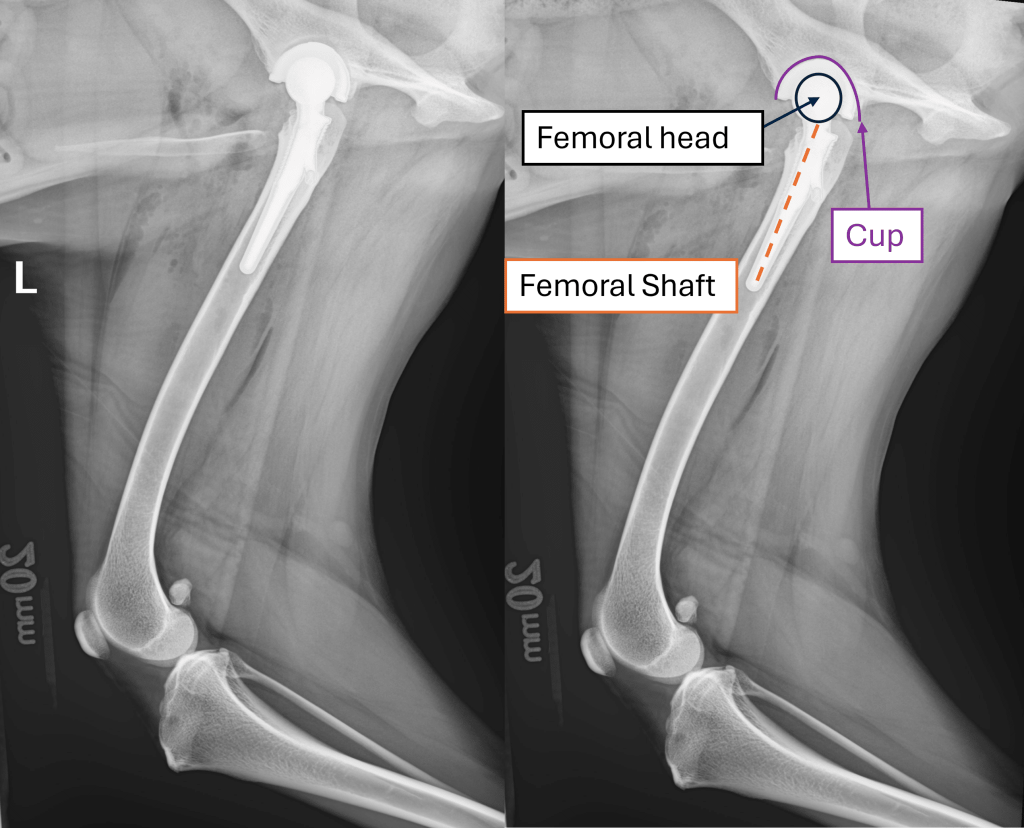A couple of weeks ago I attended a lecture by my colleague Dr. Rob Hart, Director of Orthopedic and Joint Replacement Surgery at AMC. Not surprisingly, he spoke about hip replacement surgery. Being a medical type and not surgical at all, I found his presentation fascinating. Going into the talk, I had thought total hip replacement was primarily a treatment for hip dysplasia, but I learned there are more reasons for a total hip replacement and thought my readers would find these bits of information interesting as well.
Modular Surgical Equipment for Veterinary Patients
The number of pieces of surgical equipment in Dr. Hart’s total hip kit numbers about 200. He described how the pieces of the orthopedic implant are “modular,” which means he can choose the right acetabular cup (the socket part of the hip joint), femoral head (the ball part of the hip joint) and femoral shaft (inserted into the thigh bone) for each patient and assemble a custom replacement joint to best fit the patient. The photo accompanying this blog shows each of these sections of the implant in an x-ray taken immediately post-operation.
Hip Replacement Adhesives: Cement or No Cement?
Dr. Hart spoke about hip replacement with and without cement. The need for cement is easy to understand – something needs to hold the acetabular cup and femoral shaft in place. I’ve never understood how the orthopedic implant was held in place without cement, but it turns out the body can do it on its own. A cementless implant is porous, and the bone ultimately grows into the implant. These implants are less likely to loosen over time than those with cement.
Total Hip Replacement in Animals of All Ages
Today’s surgical implants are much longer lasting than implants used in the past. Current hip implants are made of cross-linked plastic, making them very durable. This allows total hip replacement in dogs as young as six months of age. There are a number of canine conditions that might result in the need for a total hip replacement in a young dog, including:
Legg-Calves-Perthes Disease | This disease causes degeneration of the acetabular head in young small breed dogs.
Traumatic Injury | Dogs of any age can be hit by a car, or suffer a fall or other traumatic injury that could require a total hip replacement.
Hip Luxation | When the femoral head pops out of the acetabulum, it is called a hip luxation. Sometimes the femoral head can be popped into place, other times, the femoral head won’t stay put and a total hip replacement is necessary.
More Canine Joint Replacements Coming
Dr. Hart closed his presentation with hopeful information on additional joint replacement technology for veterinary patients. He expects implants and technology to progress fast enough that dog families can expect knee, ankle and elbow replacements to be available for dogs in the future, helping improve quality of life for our furry friends in need of orthopedic assistance.

